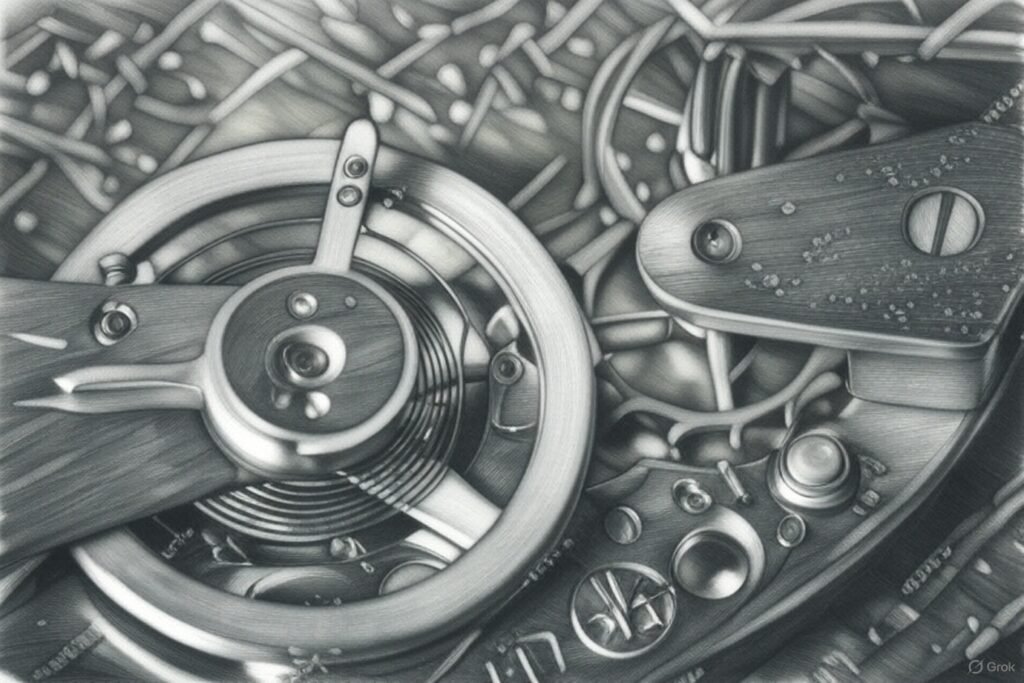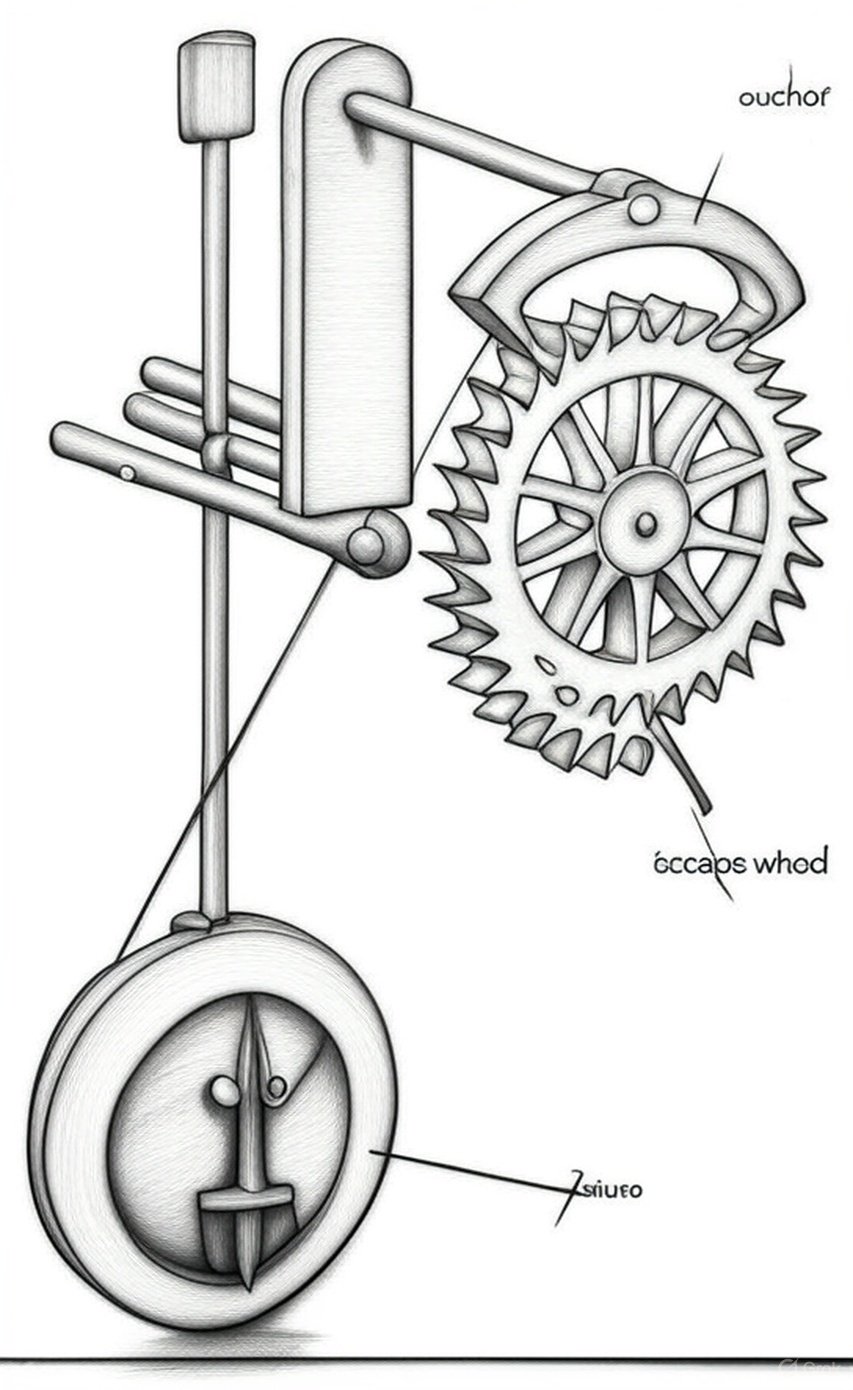Wall clocks are awesome! They tell us the time with accuracy and make our homes look cool. But sometimes, they stop working right. Don’t worry—this article will help you figure out what’s wrong with your wall clock and how to fix it.
We’ll talk about five common problems: dust and dirt, misalignment or physical damage, a clock running slow, electronic failures, and a damaged pendulum. Each section will explain the problem, how to spot it, and what to do. Let’s get started!
Introduction to Clock Repair
Clock repair is a delicate and intricate process that requires patience, attention to detail, and the right tools. Whether you’re dealing with a mechanical clock, a quartz clock, or a pendulum clock, understanding the basics of clock repair can help you fix common issues and keep your timepiece ticking smoothly.
In this guide, we’ll walk you through the process of clock repair, from identifying the problem to reassembling the clock. By learning how to diagnose and resolve common issues, you can save money and enjoy the satisfaction of fixing your own clock.
Understanding Clock Components
Before you start repairing your clock, it’s essential to understand the different components that make up the clock mechanism. The clock hands, gears, and springs are common to most clocks, but the type of movement can vary.
Mechanical clocks use a spring-driven mechanism, while quartz clocks use a battery-operated quartz crystal to regulate time. Pendulum clocks, on the other hand, use a swinging pendulum to regulate time. Understanding how these components work together is crucial to successful clock repair. Knowing the difference between these mechanisms will help you diagnose issues more accurately and apply the right fixes.

Dust and Dirt Accumulation In The Clock Mechanism
What’s the Problem?
Dust and dirt are sneaky! They can get inside your wall clock and make it act funny, so it’s important to carefully remove them. Dust sticks to the gears or parts that move, which can slow them down or stop them completely. This is super common, especially if your clock is old or in a dusty room.
How to Spot It
- The clock stops ticking or moves slower than it should.
- You hear weird grinding or scraping sounds.
- When you look closely, you see dust or grime on the clock’s face or inside the case.
How to Fix It
- Turn Off the Clock: If it’s battery-powered, take out the batteries. If it’s a pendulum clock, gently stop the pendulum.
- Clean the Outside: Use a soft, dry cloth to wipe the clock’s face and case. Don’t use water—it can damage the clock!
- Clean the Inside: If you’re comfortable, open the back of the clock (check the manual if you have one). Use a small, soft brush (like a clean paintbrush) to gently brush away dust from the gears, keeping them free from any debris. For tricky spots, use a can of compressed air (like the kind for cleaning keyboards).
- Check the Hands: Make sure the clock hands aren’t stuck together or covered in dirt. If they are, gently clean them with a dry cloth.
- Test It: Put the batteries back in or start the pendulum. If it’s ticking again, you’re good!

Misalignment or Physical Damage
What’s the Problem?
Sometimes, a clock gets bumped, dropped, or hung crooked on the wall. This can mess up the insides or make the hands bend. Misalignment or damage stops the clock from working properly and can sometimes lead to more complex problems.
How to Spot It
- The clock is tilted or not hanging straight.
- The hands are bent, touching each other, or stuck.
- The clock makes a weird noise, like something’s loose inside.
- You see cracks or dents on the clock’s case.
How to Fix It
- Check the Alignment: Make sure the clock is hanging level. Use a small level tool (or an app on your phone) to check. Adjust it so it’s straight.
- Inspect the Hands: If the hands are bent or touching, gently remove the clock’s front cover (if possible) and use tweezers to straighten them. Be super careful not to break them!
- Look for Loose Parts: If you hear rattling, open the back (if you’re comfortable) and check for loose screws or parts. Tighten anything loose with a small screwdriver.
- Test It: Restart the clock by putting in batteries or starting the pendulum. If it’s still not working, the damage might be too big for a simple fix.
- Get Help: If the clock is cracked or badly damaged, take it to a professional clock repair person to get it properly repaired. They have special tools to fix it.
Clock Running Slow
What’s the Problem?
Is your battery operated clock always a few minutes behind? A clock running slow usually means the battery is weak (for battery-powered clocks) or the gears are having trouble (for mechanical clocks). Sometimes, it’s just a setting that needs adjusting.
How to Spot It
- The time is wrong, and the clock is losing minutes every day.
- For battery clocks, the hands move slowly or jerkily.
- For pendulum clocks, the pendulum swings unevenly or too slowly.
How to Fix It
- Check the Battery (Battery Clocks):
- Take out the old battery and put in a fresh one, replacing the worn-out part. Use a good-quality battery (like alkaline).
- Make sure the battery is in the right way (check the + and – signs).
- Clean the battery compartment with a dry cloth to remove any corrosion (green or white gunk).
- Adjust the Pendulum (Pendulum Clocks):
- If the pendulum is too low, it swings too slowly. Gently slide the pendulum weight up a tiny bit (check your clock’s manual for how).
- Make sure the pendulum isn’t hitting anything as it swings.
- Lubricate the Gears (Mechanical Clocks):
- If the gears are sticky, they might need oil. Use a tiny drop of clock oil (not regular cooking oil!) on the gears. You can buy clock oil online or at a craft store.
- Only do this if you’re comfortable opening the clock. If not, take it to a professional.
- Test It: Reset the time and watch the clock for a day. If it’s still slow, it might need a deeper repair.
Electronic Failures – Clock Repair
What’s the Problem?
Some modern wall clocks have electronic parts, like lights, sounds, or special features, making them a more complex device. If these parts fail, the clock might stop working or act weird. This usually happens in battery-powered or plug-in clocks.
How to Spot It
- The clock’s lights or sounds don’t work.
- The hands don’t move, even with a new battery.
- The clock resets itself or shows random times.
- You smell something burning (yikes—unplug it right away!).
How to Fix It
- Check the Power Source:
- For battery clocks, try a new battery and clean the battery contacts with a dry cloth.
- For plug-in clocks, make sure the outlet works by plugging in something else (like a lamp). Check the cord for cuts or damage.
- Reset the Clock:
- Some clocks have a reset button. Press it (check the manual for where it is).
- If there’s no button, take out the battery or unplug the clock for 10 minutes, then try again.
- Look for Burn Marks:
- If you see or smell anything burnt, stop using the clock—it’s not safe! Take it to a professional or have the faulty parts replaced.
- Test It: If the clock works after resetting or changing the battery, great! If not, the electronic parts might be broken.
- Get Help: Electronic fixes are tricky. If you’re not sure what’s wrong, take the clock to a repair shop or contact the maker.
Damaged Pendulum
What’s the Problem?
Pendulum clocks are super cool, but a damaged pendulum can be a sign of underlying issues. If it’s bent, broken, or not swinging right, the clock won’t keep time.
How to Spot It
- The pendulum doesn’t swing smoothly or stops quickly.
- The pendulum looks bent or has a broken piece.
- The clock doesn’t tick, even when you start the pendulum.
- The pendulum hits the clock’s case or other parts.
How to Fix It
- Check for Obstructions:
- Make sure the pendulum isn’t touching the clock’s case or other parts. Adjust it gently if needed.
- Ensure the clock is level (use a level tool) so the pendulum swings evenly.
- Inspect for Damage:
- Look at the pendulum rod and weight. If they’re bent, you might be able to gently straighten them with your hands or pliers (be careful!).
- If the pendulum is broken or cracked, you may need a replacement part. Check with the clock’s maker or a repair shop.
- Adjust the Swing:
- Gently start the pendulum swinging. It should move back and forth evenly. If it stops too soon, the clock might need oil (see the “Running Slow” section for how to lubricate).
- Test It: Set the time and let the clock run for a few hours. If the pendulum keeps swinging and the time is right, you fixed it!
- Get Help: If the pendulum is badly damaged or the clock still won’t work, take it to a professional to restore its functionality. Pendulum clocks are delicate!
Reassembling the Clock
Reassembling the clock requires careful attention to detail to ensure every part is correctly positioned and firmly fastened. Basic tools, such as pliers, screwdrivers, and lubricants, are necessary for effective repair. Specialized tools, like a spring winder or clock hand puller, may be required for complex repairs.
When reassembling, make sure to follow the reverse order of disassembly, ensuring that each component is clean and properly aligned. Understanding the mechanics of a wall clock is essential for effective repair, so take your time and double-check each step to ensure everything is in its right place.
Maintaining Your Timepiece
Regular maintenance, such as cleaning and lubricating, can help prevent common issues with your wall clock. Dust and dirt can accumulate inside the clock mechanism, causing it to slow down or stop. Use a soft brush to gently clean the internal components and apply a small amount of clock oil to the gears and moving parts.
Checking the clock’s mechanism and making adjustments as needed can also help keep your clock running smoothly. By performing these simple maintenance tasks regularly, you can extend the life of your clock and ensure it continues to keep accurate time.
Conclusion and Next Steps
Clock repair can be a rewarding and challenging hobby, but it requires patience, attention to detail, and the right tools. By following the steps outlined in this guide, you can fix common issues with your wall clock and keep it ticking smoothly.
Remember to always handle your clock with care and use the right tools to avoid causing further damage. With practice and experience, you can become proficient in clock repair and enjoy the satisfaction of fixing your own timepiece. Whether you’re dealing with a minor issue or a more complex problem, the key is to approach each repair with care and precision. Happy repairing!
Final Thoughts On Repairing Your Own Clock
Wall clocks can have problems, but most are easy to fix with a little care and attention to details! Dust and dirt, misalignment, slow running, electronic failures, and damaged pendulums are super common issues. By checking your clock carefully and following these steps, you can get it ticking again. If you’re ever unsure or the problem seems too big, don’t be afraid to ask a professional for help—they’re experts at making clocks work like new.
To keep your clock happy, clean it regularly, hang it securely, and check the battery or pendulum often. Now, go fix that clock and enjoy the tick-tock sound in your home!

